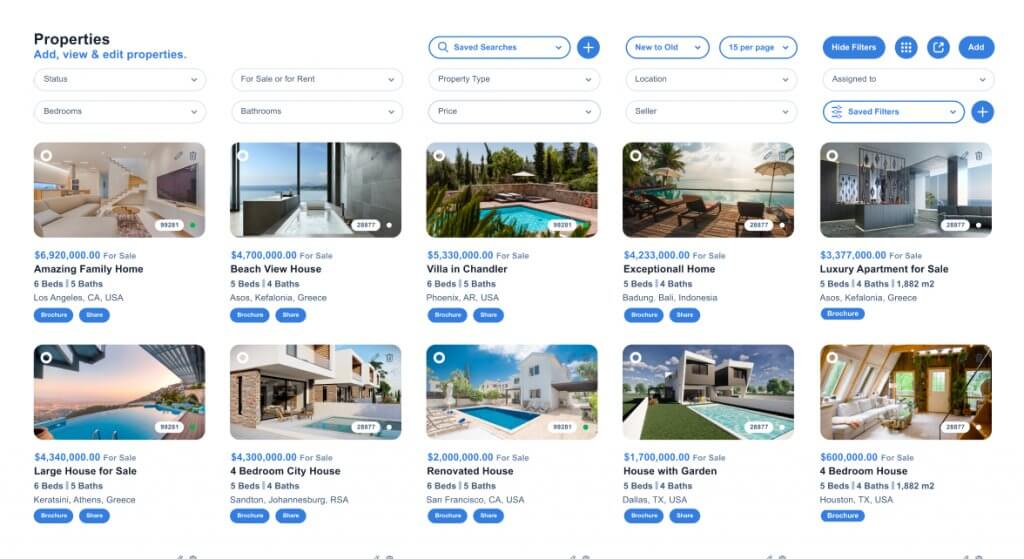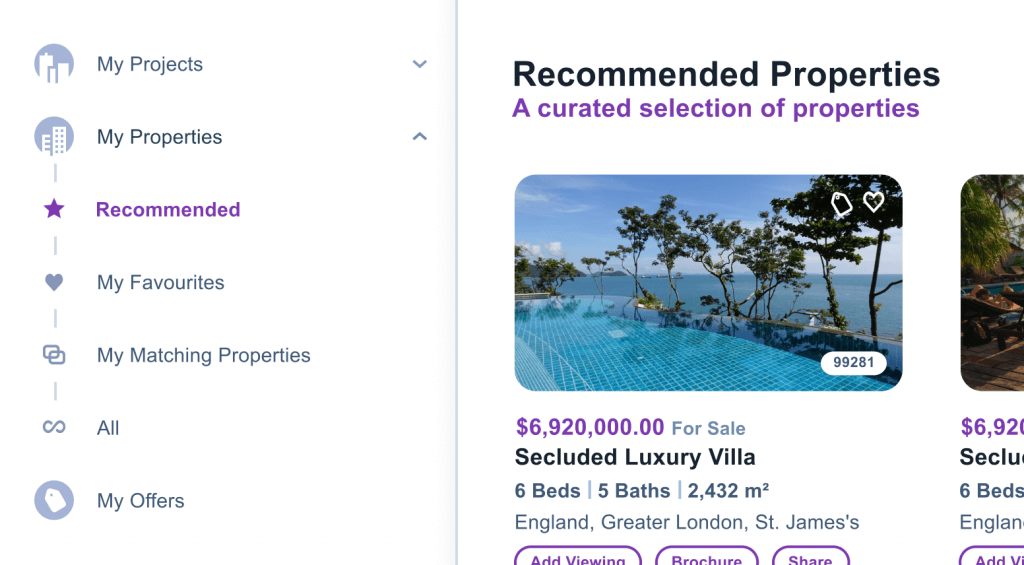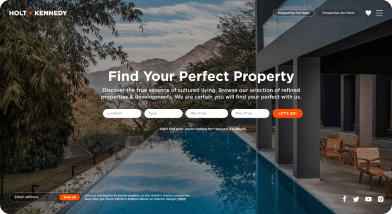The Digital age is upon us and social media has taken the business world by storm, pushing aside traditional marketing and PR instruments. Today, it’s hard to imagine a business that doesn’t have an online presence in one form or another. Nevertheless, the Real Estate industry is still lagging behind, following the presumption that their target audience wouldn’t approach property purchases online.
In reality, according to a study by NAR (National Association of REALTORS), in 2018 44% of homebuyers looked for properties online first and 65% of first-time homebuyers were millennials, a generation that spends most of its time online. The research established that one of the three most valuable technology tools used in Real Estate is Social media and that it is the number one top tech tool that brings in the highest quality of leads.
Hootsuite found out that the number of social media users worldwide in 2019 is 3.484 billion. So, imagine how many potential leads a company is losing by ignoring these platforms.
Hopefully, you are now convinced and are ready to start using social media. But where should you start?
Really, like anywhere else in business, you start with KPIs and your strategy. Sit down and think what you want to see as the result. Is your main concern increasing website traffic? Do you want to promote a certain image for your company that differentiates you? Or do you actually want to simply increase sales in a certain sector? What is the overall business goal for your company? Finding an answer to these questions will guarantee that you won’t lose focus along the way and will be able to use the tools more efficiently. After all, it’s much easier to get somewhere, when you know where you are going!
After you finalise your goals, it’s time to work on the strategy. As you know where to go now, you need to see which route will be the quickest and safest to help you reach your destination. Here is a step by step process to assist you:
Step 1 – Choose your channels
Use every channel that you can, as each one provides a different approach and caters to a different age group. Instagram, for example, mostly attracts a younger audience, while Facebook and Linkedin target people aged from 25 to 34. If you had to choose just two, Facebook and Instagram probably have the most traction in Real Estate, as they offer the most useful tools and have the biggest conversion rate.
Step 2 – Create your profile
Think of your profile as an ad for your company. You want to make sure that a person can get all the information they need from it. Add your contact details, working hours, website URL, and make sure to keep them updated at all times. Think of a short description that summarises the essence of your brand and tells the viewer why he needs to engage. Add branded headers and profile pictures, that co-relate to your corporate branding.
Step 3 – Diversify your content
Usually, in marketing, we focus on getting people’s attention any way we can. On social media, the game rules are a little bit different. It is more about providing valuable engaging information, that will be useful to the viewer. Nobody wants to see non-stop promotional content in their feed all day! By providing interesting content, you are promoting your brand and your expertise level.
Try creating helpful articles about property purchases and real estate market dynamics. Promote the town that your listings are in, by posting updates on local events and news. Conduct surveys and ask your followers what they want to read about. Engage with them and set up contests with small rewards. Regularly blog on your website and promote posts on your social media channels. Repost and share other people’s content, real estate news and articles, with your comments on the subject. Offer free advice and answer questions. Try to always have a clear understanding of the message you want to send and the result you want to get from it. It’s not that there can’t be any promo posts at all, as there can and should be. It’s just important to remember not to oversell.
Step 4 – Know when to post and how often to post
As mentioned above, content is very important. But even the best quality of content won’t get as many impressions as it could if it is posted at a time when nobody is looking for it. This is why knowing when to post your content is just as important. Each social media channel has its own peaks and troughs in traffic, and you want to make sure you know exactly when they take place. By posting at the right time, you can reach the maximum of potential clients and raise brand awareness to new heights. According to SproutSocial, here are the best times to post on:
- The best times to post – Wednesday at 11 a.m. and 1 p.m.
- Best day to post – Wednesday
- Safest times to post – Weekdays from 9 a.m. to 3 p.m.
- Worse day to post – Sunday
- The worst time to post – Early mornings and evenings, before 7 a.m. and after 5 p.m.
- The best times to post – Wednesday at 9 a.m. and Friday at 9 a.m.
- Best days to post – Tuesday and Wednesday
- The safest times to post – Monday through Friday from 8 a.m.– 4 p.m.
- Worse day to post – Saturday
- The worst time to post – every day from 10 p.m to 4 a.m.
- The best times to post – Wednesday at 9–10 a.m. and 12 p.m.
- The best day to post – Wednesday.
- The safest times to post -Tuesday through Friday from 8 a.m. to 2 p.m.
- Worse day to post – Sunday
- The worst time to post – every day from 9 p.m. to 3 a.m.
- The best times to post – Wednesday at 11 a.m. and Friday at 10 to11 a.m.
- Best day to post – Wednesday
- The safest times to post – Tuesday through Friday, from 10 am to 3 p.m.
- Worse day to post – Sunday
- The worst time to post – Late night and early morning from 11 p.m. to 3 a.m.
Another important aspect of posting is CONSISTENCY. The less you post the more followers will leave. Think of it as any other communication. The less you communicate with someone the further apart you grow. Being regular with your posting will allow your followers to constantly be reminded of you and to always have you in the back of their mind. The important thing here is to find a balance between casual reminders and overwhelming spamming. But don’t worry, you will always be able to adjust your posting schedule according to the feedback you get.
To help you plan and remain consistent with your posting, there is a variety of social media software that schedules everything beforehand and automates the whole process for you. This way you can be sure that you are posting multiple times per day at the right time. Some of the most popular tools are Buffer, Sprout Social, HootSuite and CoSchedule.
Step 5 – Establish your audience
It’s easy to dream big and want to reach the whole world when posting on social media. And even though that’s a good goal, at the beginning you need to focus on growing your audience in your local market. After you’ve acquired the majority of your local audience, you can easily move on to the next level. This will allow you to build a strong foundation and will help you appear more legit when approaching a foreign audience.
Try to produce content that will attract your local community. Post photos of your surroundings, re-post local news and sponsor or mention local events. Become part of your local community and invest in it. Support other local business and ask them to return the favour. Always reply to comments, no matter if they are good or bad. When your local audience has your back, it’s much easier to take risks and try out new markets.
Step 6 – Invest in visuals
As mentioned numerous times before, visual content is key in marketing. More than that, we are slowly but steadily moving away from simple images in favour of videos. According to a survey conducted by Wyzowl 68% of people say they prefer to learn about a new product or service by watching a short video. This makes video more popular as a learning tool than text-based articles (15%), infographics (4%) and presentations and pitches (4%). The same survey also reveals that 79% of people say a brand’s video has convinced them to buy a piece of software or app and 83% of marketers say video gives them a good ROI (up from 78% in 2018).
All these numbers are a pretty strong argument in favour of adapting videos in your social media too. Especially since social media platforms offer a vast amount of video formats to try out. You can experiment with stories, use live broadcasts, link YouTube videos and even create 360-degree views of your properties.
Step 7 – Give a voice to your clients
It’s one thing when you are the only one pointing out how great your company is, and something completely different when your actual clients are. Modern Comment, a customer recommendation tool, created an infographic, showcasing that 72% of consumers trust online reviews as much as personal recommendations and 90% of people use online reviews to make buying decisions. So, in order to attract new customers, your current ones need to speak up!
Collect feedback from your clients and create success stories, ask them to leave a review online or provide a quote about your service. Bring life to your words by allowing your potential customers to see real cases supporting them. You may even take it a step further and ask your clients to record a short video testimonial, killing two birds with one stone – getting a review and a video visual. Reviews help you to raise your brand’s credibility and are guaranteed to increase your clientele.
Step 8 – Hashtags Hashtags Hashtags
We’ve talked about the use of hashtags in Real Estate before, so we won’t go into much detail here. In short, hashtags help people who don’t know you find you on social media. This is why they are a very important part of digital marketing. The more popular the hashtag, the more people will view your post, so use tools like RiteTag to analyse which tags are trending. Create your own branded hashtag to build your following and have quick access to posts about your brand. The main rule to remember here is not to overdo it. Just like everywhere else, you need to find a balance that works.
Step 9 – Analyse this!
The only way to get a good understanding of how well you are doing on social is to analyse everything. In the beginning, you need to constantly be testing different approaches and ideas, to see what works, and the only way to do that is to see the numbers. Facebook, Twitter and LinkedIn, all provide an in-house analytics tool, that will allow you to see the dynamics of your channel. They will allow you to understand how many impressions your posts are getting, what the engagement level is, etc. After you collect all the data required, you will be able to fine tune each post in a way that will bring you the maximum exposure.
Of course, there are more things that you can do and more details that can help you along the way, but the above are the main ones to focus on when you are just starting out. Social media isn’t as hard as people make it to be, however it does require patience and effort. The hardest part about social media is to try and think outside the box of your personal preferences and try to understand your audience. It’s all about listening and replying, than talking and promoting.




